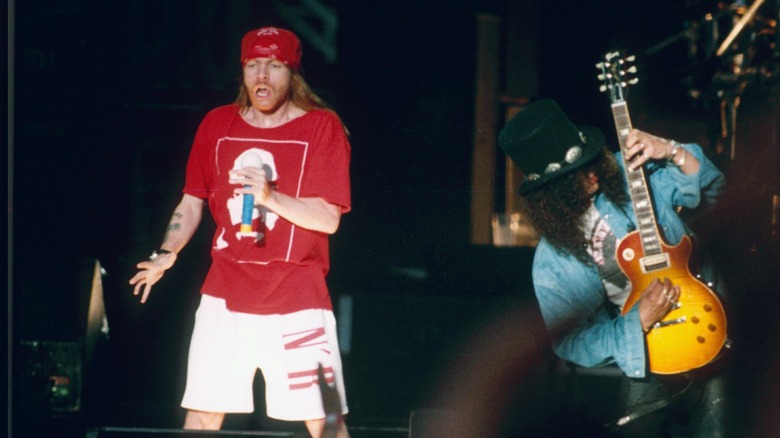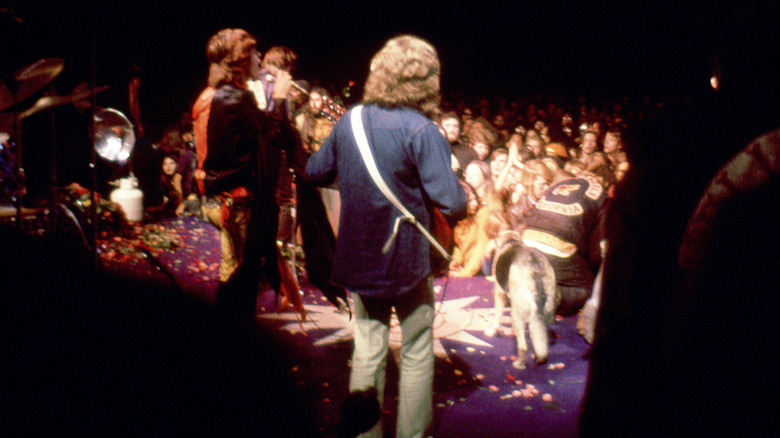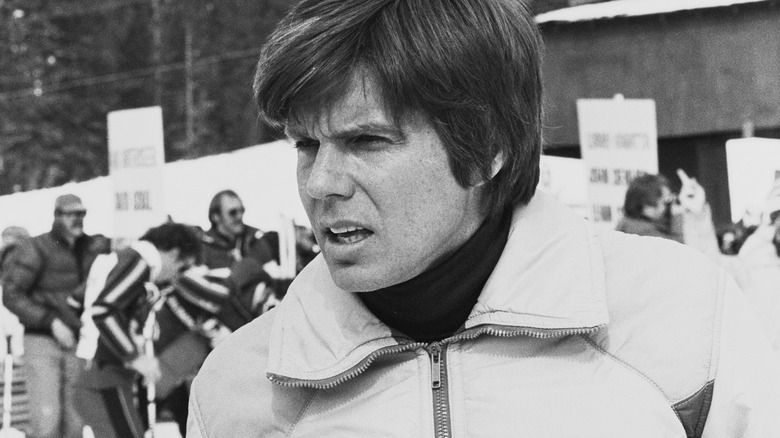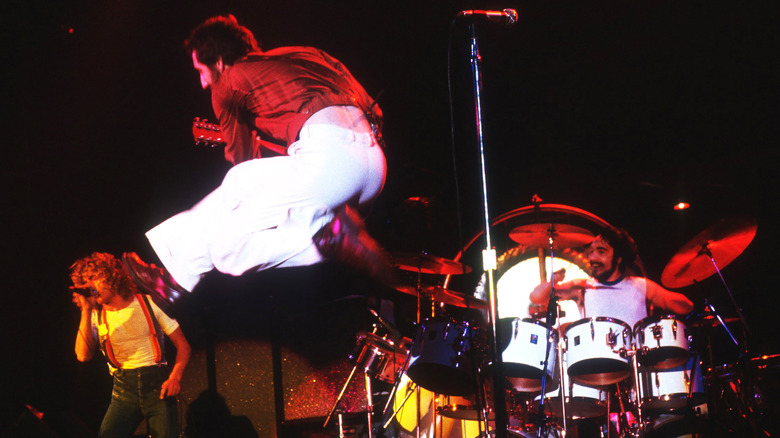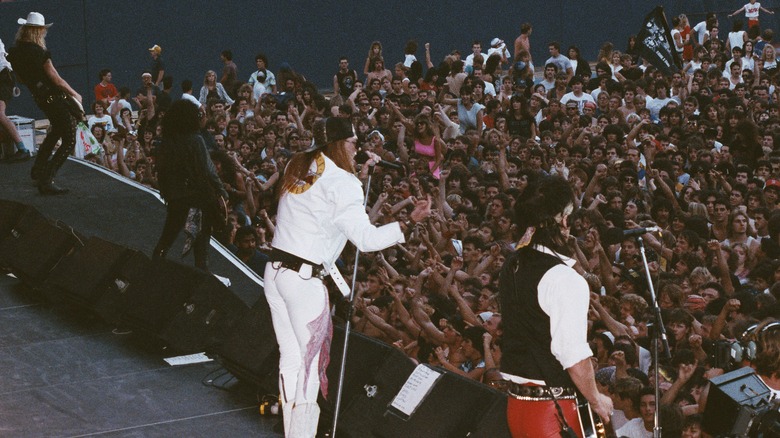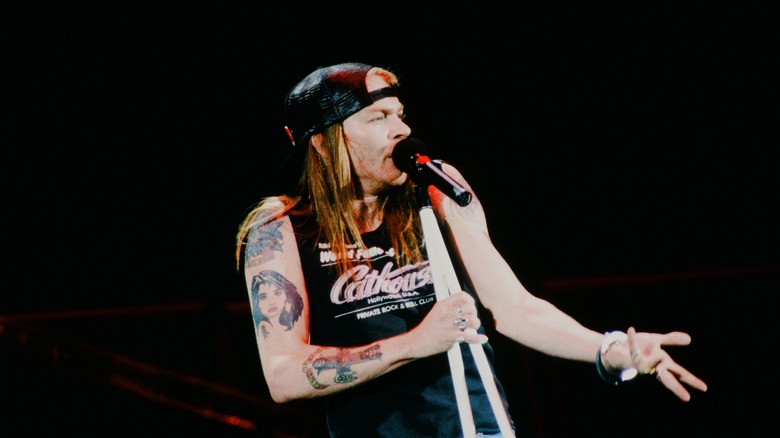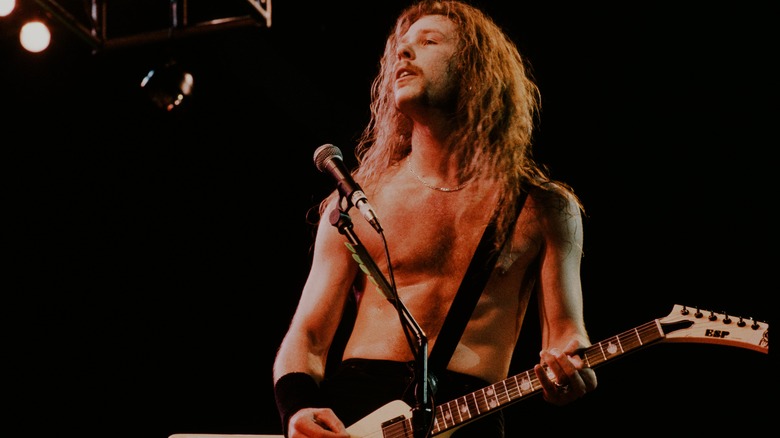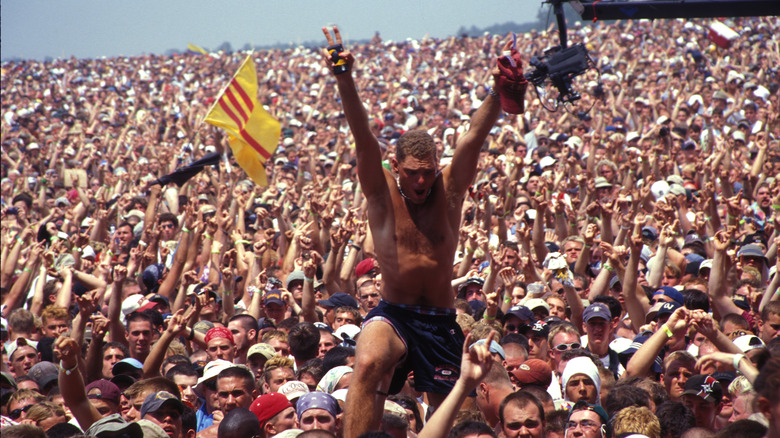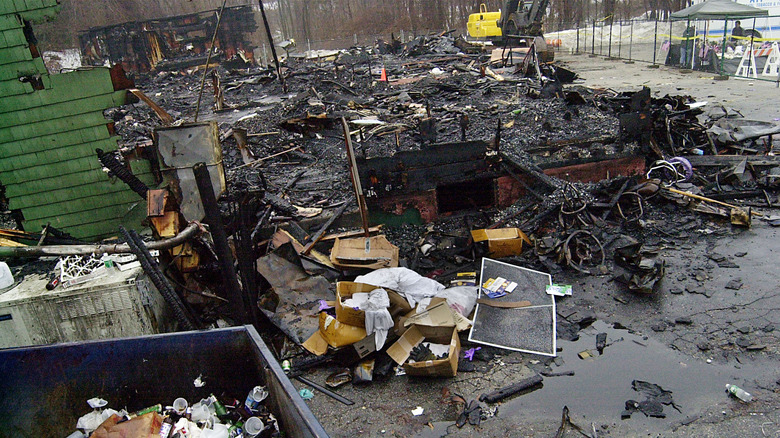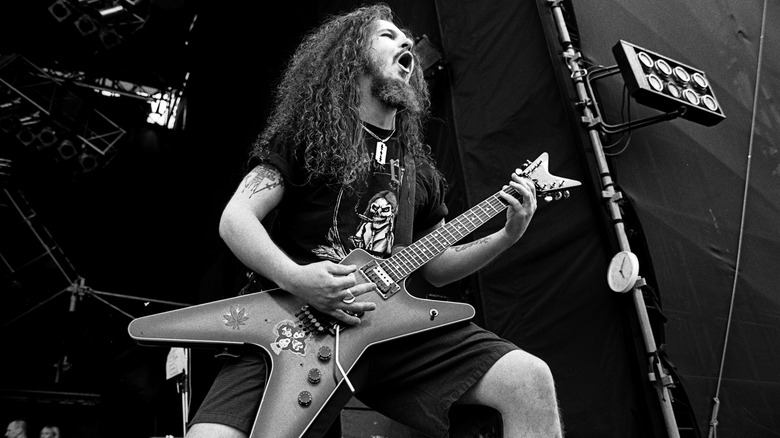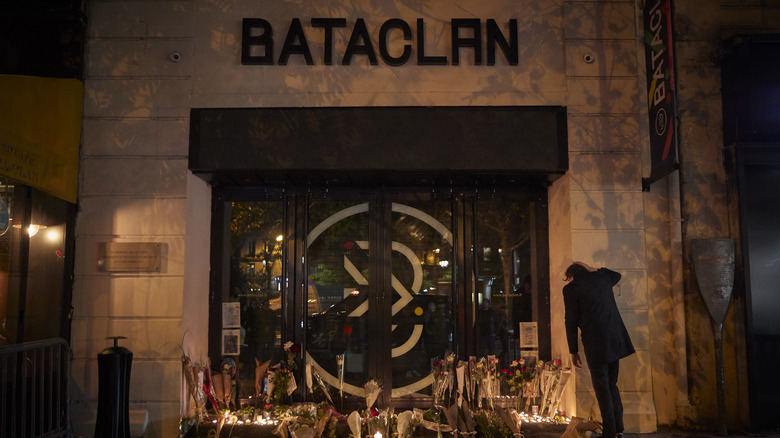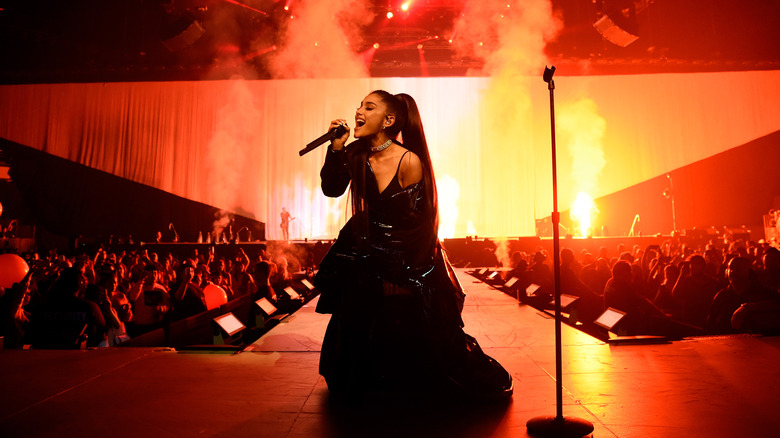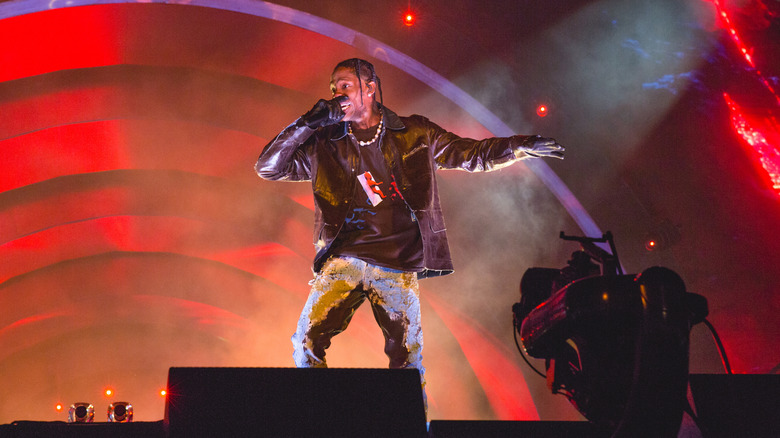Concerts That Devolved Into Chaos
On the one hand, it's kind of amazing that concerts don't devolve into deadly mayhem more often than they do, considering the fact that we're talking about events where famous musicians implore huge, drunk crowds to go nuts in a confined space. The inherent danger here is why so much rides on security, crowd control, and other safety features of the venue. You're not just paying to see your favorite artists, after all — you're paying to do it safely. 99% of the time, you can expect to head to the venue with your pals, scream yourself hoarse to some of your favorite tunes, and crawl into bed at dawn with some great memories.
But every once in a while, things go awry. From hiring a biker gang as security and paying them in beer, to Axl Rose, to deadly nightclub fires, terrorist attacks, Axl Rose, human stampedes, assassinations, Woodstock '99, and Axl Rose, these concerts descended into tragic chaos and proved that no, the show musn't always go on.
The 1969 Altamont Festival
Set to the backdrop of the Vietnam War and the American Civil Rights movement, History says August 1969's Woodstock festival in upstate New York, featuring acts like Creedence Clearwater Revival, Janis Joplin, The Who, Jimi Hendrix, and other legends, was a monumental event that has since become an enduring symbol of flower power counterculture.
Unfortunately, attempts at reviving the festival have met with a bit less success in the "peace and love" department. The first attempt actually came later that same year. Another History article says the Rolling Stones were set to headline the Altamont Festival in California, which was marketed as the west coast equivalent of Woodstock. Many bands that had been at the first festival, like Santana, Jefferson Airplane, and the Grateful Dead, signed up for this one too.
Unfortunately, so did the Hells Angels, who had been hired as "informal security." Instead of payment, they got $500 worth of beer. The untrained, unprofessional biker club has proven the value of proper security at concert venues and festivals ever since. The Angels were far too rough on the understandably excited crowd. Things got so bad that The Grateful Dead, the last act to go on before the headlining Stones, didn't even play out of fear for their own safety. Meanwhile, the lead singer of Jefferson Airplane was injured by one of the bikers, and, tragically, 18-year-old concert-goer Meredith Hunter was stabbed to death.
The Beverly Hills Supper Club, May 1977
The Beverly Hills Supper Club in Kentucky had a storied history and a tragic end. Built in the late 1920s, the nightclub was one of the more popular speakeasy-slash-illegal-gambling-sites in the Ohio River Valley during Prohibition, according to Explore KY History. When Richard Schilling bought and refurbished it in the early '70s, it served a much more mundane purpose as a dinner theater and reception hall for proms and weddings. Occasionally concerts would be hosted there, like the ill-fated one that took place on May 28, 1977.
While actor and singer John Davidson was performing in the Cabaret room, patrons started complaining about stuffy, smoky conditions. Smelling smoke, a staff member opened up the Zebra room — which poured more oxygen on a fire that was already raging in the attic of the building. Before long, the flames spread throughout the club, forcing employees to evacuate the guests. Unfortunately, blocked exits and overcrowding led to panic as guests struggled to find their way out of a building increasingly choked with smoke. At midnight, the roof caved in. Two hours later, the fire was under control, although the last embers wouldn't go out for two days.
165 people died in the fire, but some good did come out of the incident. After poor aluminum wiring was discovered to be responsible for the initial spark, buildings all across the country rushed to improve their own setups to prevent future disasters.
1979 Cincinnati Who concert
Nobody likes paying top dollar for nosebleeds at concerts and ballgames, but there's a reason most venues have retired the general admissions seating system, otherwise known as "festival seating." Essentially, the first come, first serve policy incentivizes people to rush into the venue as soon as the gates open, to get the best unreserved seats. If it's a big enough crowd trying to pour through narrow access points, well, you can see how problems might arise. Afraid of stampedes and human crushes, most venues retired the dangerous system by the late '70s.
But not Cincinnati's Riverfront Coliseum, which History says continued their general admissions policy even after a 1977 incident at a Led Zeppelin show that was marred by numerous injuries and 60 arrests.
But that was nothing compared to what happened there on December 3, 1979, when The Who came to town. The article says fans had started gathering outside at around noon, hours before the show was set to start. As the crowd swelled, the police were called to maintain order. When the gates opened, thousands of fans stormed the venue, leading to a stampede that killed 11 concert goers. The band wasn't made aware of the tragedy until after the concert. Luckily, the city finally banned general admissions seating as a result of the incident. Although this was overturned 24 years later, improved crowd control methods have been effective at preventing human crushes.
1988 Monsters of Rock festival
Featuring KISS, Iron Maiden, David Lee Roth, and Megadeth as headliners, the 1988 Monsters of Rock festival at Castle Donington, England, was a headbanger's dream come true. But tragedy struck during the set of surging up-and-comers Guns N' Roses.
Song Facts says that several conditions contributed to the incident. First, although GN'R was fifth on the bill when they were announced, some of their hits (most notably "Sweet Child O' Mine") had blown up between then and the actual show, leading to a much larger crowd than what was originally anticipated. Additionally, rainy weather had turned the ground to slippery mud, so an already out-of-control crowd of 107,000 screaming fans was constantly slipping and sliding towards the stage, squeezing those in front up against the barriers. This forced frontman Axl Rose, hardly a veteran of controlling massive crowds at that point, to stop the set on numerous occasions.
"Don't f***in' kill each other," he said at one point. It didn't work, and nobody stopped the show. It wasn't until after the concert that the band, elated after playing to such a riotous crowd, was informed that two fans, 18-year-old Alan Dick and 20-year-old Landon Siggers, had been crushed and killed. The band was partially (and perhaps unfairly) blamed for the violence, and the festival was not held in 1989. When it returned in 1990, better safety features had been implemented.
The Riverport Riot
Guns N' Roses might've been the biggest band on the planet in 1991, and the public was waiting eagerly for the release of that year's "Use Your Illusion" double album. But as Loudersound points out, the 1991-1993 tour for those blockbuster records was going to be marred by late starts, outrageous costs, legal trouble, and all manner of chaos and controversy.
Billboard remembers an early incident in St. Louis that seemed to foreshadow the madness that was to come. On July 2, 1991, GN'R was roughly halfway through their typical three-hour set when, during a performance of "Rocket Queen," frontman Axl Rose spotted a fan in the crowd illegally videotaping the show. He immediately called security's attention to the bootlegger, but when nobody responded, he dove into the crowd himself. After punching the man in the face and climbing back onstage, a fuming Rose said, "Well, thanks to the lame-a** security, I'm going home!" He then smashed the mic on the floor and stormed off.
What followed was the Riverport Riot — when thousands of infuriated fans ripped the brand new Riverport Amphitheater to pieces. While staff cowered backstage, video screens were torn down, and brawls broke out between fans and the police, who eventually retreated and left the venue to the rioters after a firehose failed to control the crowd. Dozens of people were carried out on stretchers, and GN'R was banned from St. Louis for years.
Metallica and Guns N' Roses double-header
It seemed like a match made in headbanger heaven: Metallica and Guns N' Roses, arguably the two biggest metal bands on earth in 1992 — and both on tour supporting blockbuster albums — would join forces for a brief stint in North America. However, as Loudwire points out, this partnership would go down in history for all the wrong reasons. On August 8, 1992, the behemoth double-header stopped at Montreal's Olympic Stadium.
During the opening notes of "Fade to Black," Ultimate Classic Rock says Metallica frontman James Hetfield accidentally walked right into a pyrotechnic blast and suffered third-degree burns. After being rushed to the hospital, the band informed them that the concert couldn't continue. Co-headliners Guns N' Roses then took two hours to hit the stage. Once they did, frontman Axl Rose made it an hour in before walking off, complaining about vocal problems (other band members complained about the sound system).
The crowd, after having both sets cut short, rioted. Not only was the stadium seriously damaged, but the chaos spilled into the surrounding streets, where fires were set and a police cruiser was flipped over. When it was over, a dozen people had been arrested and roughly the same number had been injured. "I go and light myself on fire," Hetfield later commented on VH1's "Behind the Music," "and [Rose] upstages me."
Woodstock '99
The original Woodstock was one of the most celebrated moments of the 20th century. Woodstock '99, an attempt to recapture that "peace and love" spirit (for profit) was iconic too, but not for the right reasons.
Rolling Stone has details on the infamous three-day festival. Not everything can be catalogued here, but you can certainly imagine the kind of insanity that would ensue if you shoved a few hundred thousand broke, drugged-up kids on a hot tarmac in sweltering heat with inadequate water and plumbing, while failing to hire adequate security and booking bands who are notorious for getting sober crowds to go nuts.
After three days of literally riotous sets by such renowned flower power groups as Korn, Limp Bizkit, and the Red Hot Chili Peppers, the crowd of more than 250,000 lost all sense of composure. Fires were set, infrastructure was wrecked, fights broke out, and dozens were seriously injured. For a few hours, no one was in control as a small city's worth of unbridled, coke-addled dudebro energy was unleashed in all its ugliness. When the smoke cleared, not only did the area look like war-torn Poland, but multiple people reported being sexually assaulted. Maybe it's a good thing the event killed the '90s. Good riddance.
If you or anyone you know has been a victim of sexual assault, help is available. Visit the Rape, Abuse & Incest National Network website or contact RAINN's National Helpline at 1-800-656-HOPE (4673).
2003 Great White concert at the Station nightclub
Hair metal vets Great White didn't have quite as much of an impact on pop culture as some of their big-haired peers, as evidenced by the fact that they were playing nightclubs in 2003. They were about to make rock history, but not for the reasons anyone had hoped.
Ultimate Classic Rock has details on the tragic concert that took place at the Station nightclub in Rhode Island on February 20, 2003. During their first song, road manager Daniel Biechele fired off pyrotechnics that caused the sound-proofing styrofoam above the stage to ignite. The flames rapidly spread out of control. When they were finally put out, an unimaginable 100 people had died, and twice as many had been injured.
Great White frontman Jack Russell, who clearly had no idea their standard theatrics would cause so much death and mayhem, remains crushed by the events that have come to define his band more than their cover of "Once Bitten, Twice Shy" ever did. The article excerpts Bravewords, which quotes Russell as saying, on the 10th anniversary of the fire, "My heart aches for all the families and friends of the victims whose lives will forever be changed by this terrible tragedy. I too lost many friends that night, but I can't begin to equate that to the loss of a family member. For what it's worth, you have been in my prayers and always will be."
2004 Damageplan concert at the Alrosa Villa club
Throughout the '90s, Texas groove metal pioneers Pantera flew the metal flag high. By the 2000s, they were bona fide legends of the genre, alongside Black Sabbath, Judas Priest, and Metallica. Unfortunately, whereas many classic bands have toured off and on over the years, Pantera can never get the boys back together for a world tour. Drummer Vinnie Paul died of heart disease in 2018, according to AP News, but the door on a proper reunion was shut 14 years earlier when his brother, "Dimebag" Darrell was murdered onstage right in front of him.
Loudwire remembers the horrifying December 8, 2004, incident. Dimebag and Vinnie were touring with their new group Damageplan. Just two shows shy of a holiday break, they stopped at the Alrosa Villa club in Ohio. The brothers did some shots and goofed off backstage while the opening act finished up their set. Then it was their turn to perform, but they'd barely started the first song of the night before Nathan Gale, a towering, 6'5" former Marine, emerged from the crowd and opened fire on the band with a 9mm.
He managed to kill four people, including Dimebag, before taking Vinnie's drum tech hostage. Luckily, officer James Niggemeyer was nearby and managed to dispatch Gale before he could do more damage. But he'd done enough. Gale, clearly unhinged, blamed Dimebag for his favorite band Pantera's split and decided to make a reunion impossible in the most horrifying, irreversible way.
2015 Bataclan attack
In what then-French president Francois Hollande described as an "act of war," BBC says terrorists carried out a string of deadly attacks across Paris on the night of November 13, 2015, killing 130 innocent people. The most infamous incident was the mass shooting that rocked the packed, 1,500-person Bataclan nightclub, where rock band Eagles of Death Metal were in the middle of a set. Surviving witnesses said the gunmen, decked out in suicide vests for good measure, shouted things in Arabic that expressed condemnation for French meddling in the Middle East, before spraying the club with machine gun fire.
One woman recalled, "We thought it was fireworks but then there were men shooting in all directions. So we all lay on the floor and started crawling towards the stage." She managed to slip to safety, while others ran to the roof and still more hunkered down until French police arrived at the scene. Moments later, one of the gunmen was shot, and the other two detonated their belts. In total, 89 people were killed in the nightclub, and more than 100 were hospitalized with grave injuries.
"While the band is now home safe, we are horrified and still trying to come to terms with what happened in France," the band said on their Facebook page. "We are proud to stand together, with our new family, now united by a common goal of love and compassion."
2017 Ariana Grande concert at the Manchester Arena
In the deadliest terrorist attack in the U.K. since the 2005 metro bombings, History says a suicide bomber killed 22 and injured 130 at Machester Arena, immediately following a performance there by Ariana Grande on May 22, 2017. As is too often the case in these types of incidents, British authorities had known about the attacker for some time. But clearly, they failed to act before he turned a pop concert into a nightmare for thousands. Hours after the explosion, while 60 ambulances and 400 police officers helped dig through the wreckage, friends and family of attendees were still covering social media with "#manchesterarena," in the hopes of finding anything out about their loved ones.
Grande, who had exited the stage when the blast went off, was understandably devastated and shaken, she tweeted (as excerpted by NBC News, since she deleted her Twitter in 2021): "From the bottom of my heart, i am so so sorry. i don't have words."
But she didn't stop at kind words. Today says that days after the deadly attack, the singer was back in Manchester, visiting fans in the hospital. "She just came skipping on to our ward," the father of a young recovering girl said about Grande's visit. "I thought it may be a bit almost rehearsed, or a bit false ... [but] there was no 'Don't touch her, don't take pictures' ... she was brilliant. We're all fans for life now."
Travis Scott's 2021 Astroworld Festival
Plenty of artists rile up crowds at their shows. But rap superstar Travis Scott seems to have a knack for inciting riots at his concerts. ABC News says the "Highest In The Room" and "SICKO MODE" rapper has had numerous run-ins with the law because of his tendency to create dangerous crowd conditions. In August 2015, for example, he implored fans to jump barriers at Lollapalooza. Two years later, he was arrested for trying to get the crowd to overrun security and rush the barricades.
But the most tragic incident so far was at his 2021 Astroworld Festival. The same ABC article has a helpful timeline of the frightening events that transpired on November 5, 2021. People were already sustaining injuries due to the unruly crowd hours before he was set to perform. By the time Scott took the stage, the crowd was already pressing dangerously against the barricades, and some people were struggling to stay on their feet. By 9:30, medical staff were beginning to respond to reports of unresponsive, trampled concert-goers, while survivors reported screaming for their lives as they fell beneath the surging crowd.
While Scott did stop the show a few times, he kept going, even after ambulances arrived. By the time the show finally ended, 10 young people had died and hundreds were injured in the human crush. Scott has since pleaded ignorance about the true danger in the crowd.
